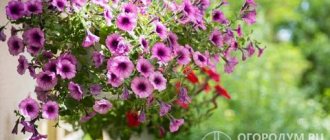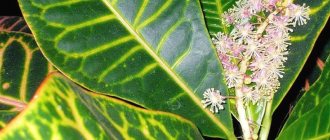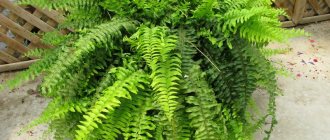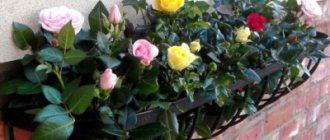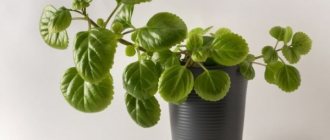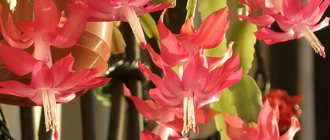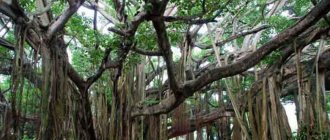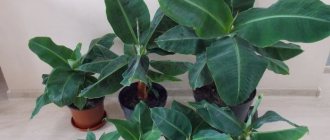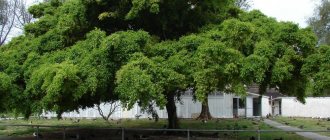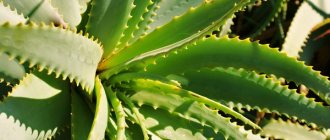Kinds
From giants to humble shrubs, epiphytes and trees, ficus grows naturally in the warm, humid climates of the Philippines, Malaysia, South Africa and Asia. The culture belongs to the Mulberry family. This is a large group, uniting several thousand plants. Residents of Crimea and Transcaucasia actively grow Ficus carica figs; this tree, in fact, is also a ficus.
Fruits (figs) of ficus "Karika"
There are different types of ficus:
- tree-like - in nature they grow up to 30 meters in height, they can send out aerial roots, which, resting on the ground, become woody and form a banyan tree;
- epiphytes - parasitize on the trunks of other plants;
- shrubby - branched bushes 1-1.5 meters in height with a lush crown and well-branched shoots.
Despite the fact that the family includes many species, no more than 20 varieties of ficus are suitable for growing at home.
Ficuses in the interior of an apartment
The largest specimens grow up to 2 meters in height. Ficuses with dense, leathery, fleshy leaf plates and an erect stem, ampelous climbing representatives, as well as bushes with small leaves, which, when properly pruned, are formed into pseudobonsai, are grown.
Ficus foliage. Photo from pixabay.com
The leaves of different species can be solid green or variegated with yellow or reddish spots or dots.
In nature, ficus is a flowering plant. A blooming ficus is a magnificent sight.
Ficus flowering
The buds come in different shades, but most often they are white with a yellowish tint to the petals closer to the center.
After flowering ends, fruits are formed in place of the buds - small nuts known as figs.
Ficus glomerulosa, wild fig
But indoor gardeners almost never get to see how ficus blooms - at home it is impossible to achieve the formation of buds due to the peculiarities of the microclimate in the room.
Crown formation
Many types of ficus require crown formation. Many new shoots and giving the desired shape to your ficus depend on this. It is better to do this procedure in the spring. Regardless of the age of the plant, cut off the tops.
This is done on both young and adult ficus trees. Thanks to this formative pruning, new shoots are formed and a lush crown of the plant is obtained. It is especially effective with ficus trees, which are grown as trees.
You can plant several varieties of one ficus in one pot, and as they grow, the shoots intertwine and form a huge crown, consisting of different varieties of ficus, such options are convenient for Benjamin ficuses, with different leaf colors.
Popular varieties
Breeders managed to adapt a tropical plant, accustomed to heat and moisture, to indoor conditions. Today, about 20 varieties can be successfully grown at home. Photos and names will introduce you to the main house ficuses and help you choose the most attractive and suitable type.
Benjamin
The most common indoor ficus with lush light green variegated foliage. Cultivated exotic grows very quickly, the shoots are thin, strewn with small leaves. The root system is powerful and very quickly fills the space of the pot, so planting this variety requires a large container. Ficus Benjamin does not require special care. Flower growers may encounter the problem of leaf falling if:
- the plant lacks light;
- the air in the room is too dry;
- the pot with the tree is in a draft;
- when the earthen coma dries out.
Ficus benjamina in the landscape
With good diffused lighting and regular watering, the ficus tree grows up to 2-3 meters in height.
To form a beautiful lush crown, pruning of shoots is used.
Bengal
Ficus Bengali
Real giants in their natural growing environment in indoor conditions are small trees. Provided optimal conditions are created and planted in a large container in a spacious room, it stretches, but rarely reaches more than a meter in height.
A distinctive feature is the formation of hanging roots on the branches, which, reaching the ground, take root.
The leaves are green, oval, pointed at the ends.
Benedicta
A meter-tall tree with a lignified thin stem, well branched at the top. The leaves are long, narrow, pointed. The variety adapts well to indoor conditions, easily tolerates shade, and needs pruning to stimulate the formation of new shoots.
Ficus Benedict is very picky about temperature; any decrease leads to the death of the plant.
Rubber-bearing
Glossy leaves of the Rubber-bearing ficus
A tree with large leaves of a deep green color. The leaf blades are oval-shaped, fleshy, covered with natural wax.
Rubber-bearing ficus is a useful plant for the home and a popular part of the interior.
Fruits of the Rubber Ficus
It attracts dust from the air onto its dense leaves. Careful care of the leaf plates is required - spraying and wiping to remove dirt. The plant responds well to showers, so 2-3 times a month it should be placed in a bath and the entire crown should be watered under running water.
The small specimen grows and develops very quickly, so the tree needs to be transplanted into a larger pot every year.
Ivy-leaved
Ficus "Pumila" - creeping fig
This type of ficus is classified as both ampelous and epiphytic. The shoots are abundantly covered with small leaves of a light green hue. An adult plant can look very impressive.
The shoots curl, stretch and droop; they form “sucker roots” that can cling to any surface. Ivy-leaved ficus is often used to decorate the interior of insulated loggias.
If the plant has enough light, a pattern appears on the green leaves; in the shade it completely disappears.
Binnendijka
A variety with lanceolate narrow green leaves, pointed at the ends and decorated with a clearly defined vein in the center. Not the largest species, but the plant is not suitable for growing on a windowsill - there will be too little space for it. With regular pruning, it forms a lush crown at the top, reminiscent of a domestic palm tree. The trunk is woody, but elastic, so experienced gardeners use the interweaving of several specimens, forming an unusual stem.
Curly
Curly ficus foliage (bonsai)
An unusual tree with small variegated leaves. Due to the fact that they curl and bend in different directions, the name of the species appeared - ficus curly.
The plant does not like changing place, so it is not recommended to move the pot. Otherwise, the tree immediately reacts by shedding its leaf mass.
Curley
A real decoration for any interior. It is distinguished by a large number of highly branched, slightly lignified shoots, on which there are light green small rounded leaves, decorated with white or yellow “blots”. Ficus curly needs pruning and good lighting.
If there is not enough light, the pattern on the leaves fades and their decorative qualities are lost.
Ficus Curley foliage
Formosana
The main decorative value of ficus formosan is its elegant light green leathery plates with a wavy edge. In order for the crown of the tree to branch well, it is necessary to trim the crown, then lateral shoots will form. Does not tolerate dry air, needs good lighting. In the shade it drops its leaves and slows growth.
Read here which flower is very similar to a domestic palm tree.
Watering
Ficus elastica, unlike other species, is moisture-loving and does not like drought, which leads to leaf fall .
At the same time, excessive watering can lead to root rot, disease and plant death .
It is easy to determine when watering is required - when the top layer of soil dries a couple of centimeters (you can check by plunging your finger into the soil).
Water abundantly, the soil should be moisture-permeable and easily allow water to pass through.
The water accumulated in the pan is drained.
Water for irrigation should be soft, settled, at room temperature or a little warmer.
Caring for ficus elastica
Rare varieties
Ficus in the interior of an apartment
If you can successfully grow popular species, it means that the climate in the house is suitable for exotics and you can plant other varieties of ficus, which are less common in indoor floriculture. Most of them are demanding in terms of care, humidity level and air temperature, but their decorative qualities are worth the effort.
Among the rare varieties:
- Microcarpa is a specimen with a bottle root protruding from the ground and a powerful lignified trunk. The foliage is dense green and responds well to pruning. Suitable for creating bonsai. Provided there is high humidity and diffuse lighting, it will delight you with the flower that forms in the axils of the leaves.
- Reed - requires regular feeding during the active growing season. The leaves look like tongues, the surface is glossy. The twigs and shoots are woody.
- Krishna is a very unusual variety found in the tropics of Africa. At the ends of the green shoots, a large green leaf with veins is formed, folded into a funnel. An ancient legend says that Krishna himself drank dew from these “glasses.” The trunk of the plant has a silver coating.
- Boxwood - the crown consists of small glossy fleshy leaves covered with natural wax. Does not take root well in stuffy rooms, requires high humidity and a temperature of at least 25 degrees. The trunk is powerful and woody. With regular pruning, a bonsai is formed.
Experienced gardeners manage to grow Ficus carica or figs at home.
Ripe fruits of ficus "Karika"
The plant requires special care; after shedding its leaves, it is removed to a cool place until new shoots appear.
Maintaining the temperature regime is the main condition that promotes flowering and fruit formation.
This is a variety with large leaves and a powerful root system. The tree requires space. Whatever variety of ficus variety you grow, the tropical plant will become a spectacular decoration of the space.
Review of ficus varieties and care secrets. Video
How to choose
If it is not possible to borrow a seedling or plant shoot, you can buy ficus in a store or nursery. When choosing a plant, pay attention not only to the variety, but also to the characteristic qualities:
- the smaller the specimen, the easier it will take root in indoor conditions;
- ficus is large, broad-leaved and requires space; if there is no space in the house, then it is better to give preference to low bushes or trees;
- the presence of a ficus flower in a store does not guarantee flowering at home - nurseries use special fertilizers and compounds that stimulate flowering;
- after purchase, the tree must be quarantined for 2-3 weeks away from other flowers in a cooler place;
- Check the roots through the drainage hole in the pot; if they are dark in color, the plant may be rotting.
Take the pot in your hands and shake lightly. Fallen leaves should warn you against purchasing.
Read about which plant has healing properties here.
Transfer
Depending on the plant variety, the pot is initially selected with medium depth for trees and shrub types, and low depth for creeping types. During the transplant process, the new container should not greatly exceed the volume of the old one. The best choice would be ceramic material. Transplantation is carried out in winter or early spring, before active growth. This should be done at least every 2-3 years, and even more often at a young age.
At the beginning of the procedure, it is necessary to thoroughly moisten the soil to better separate it from the walls of the pot.
General rules of care and reproduction
If you decide to buy ficus and forget about its existence, limiting care to watering, immediately abandon the purchase. The capricious exotic requires a lot of attention and can die if certain conditions are violated. Different varieties of ficus have their own nuances in care, but the general principles are the same.
Lighting
Diffused light is necessary for varieties with green, monochromatic leaves. Variegated varieties need bright sunlight and lighting in winter. When there is a lack of light, the leaves fall off.
To ensure that the crown develops evenly, it is recommended to rotate the pot occasionally.
Watering
The ficus pot must have drainage holes for water to drain. The root system of the plant quickly rots when moisture stagnates, but the earthen ball should not be allowed to dry out. The crop needs frequent spraying, and varieties with large leaves need to be wiped from dust.
Temperature
Not a single species tolerates placement near heating devices, but ficus also reacts negatively to lower air temperatures and drafts. The thermometer in the room should be at least +15 degrees.
Top dressing
During the active growing season from spring to autumn, complex fertilizers with a high nitrogen content are used. In winter, the plant does not need feeding, since most exotic plants at this time slow down or completely stop growing.
Transfer
The need to transplant into a larger pot is indicated by roots emerging through the drainage holes or appearing on the surface.
The container is chosen 1 cm larger in diameter, the bottom must be drained. Young specimens are replanted once a year in spring or autumn, adults no more than once every 3-5 years.
Trimming
To form the crown during the active growing season, formative pruning is carried out, removing elongated shoots. You can also pinch the tops all year round to encourage branching of shoots. In order for the plant to look healthy and not attract harmful insects, it is necessary to promptly remove branches with dried or damaged leaf blades.
Reproduction
You can buy ficus seeds in specialized stores and try planting them in the ground. The main condition for germination is high humidity and warmth. This method is rarely used by indoor gardeners, as it is not always justified - the seeds germinate poorly, and a weak plant can die as soon as it appears on the surface of the soil mixture.
The most common method is vegetative.
After pruning, the shoots are rooted in water or in a soil mixture of turf and sand, as in the photo, covering the shoot with a plastic bag or glass jar. Fresh leaves that appear on the seedling indicate that the ficus has successfully taken root.
Banyan trees are propagated by separating part of the rhizome. The method is not always effective, since the root quickly rots. Varieties with woody shoots can be propagated by rooting the leaf, but it must be cut off with part of the stem - the heel.
Everything you need to know about ficus. Video
Conditions of detention
Lighting
Ficus rubber, as it is also called, feels comfortable in diffused light. Direct scorching rays of the sun will be destructive for it, and dangerous burns may appear on the leaves. In general, it is considered shade-tolerant, but if the plant is constantly kept in the shade, it will develop more slowly and may even begin to shed its lower leaves. Rotate the pot regularly so that all sides of the crown receive the same amount of light.
Features of ficus
Ficus Golden "Elephant's Ear"
Ficus stands out among other indoor crops due to its unusual, spectacular foliage. It has a good property of absorbing dust and harmful substances from the air, but can be dangerous for pets and children.
Some varieties of ficus contain white milky sap. It is poisonous, causes allergies, and if it comes into contact with the skin, it causes burns.
You need to wear gloves when working with the plant, and install it so that pets and children cannot reach it.
Otherwise, the tropical exotic brings only joy to the owners. It is believed that ficus is a symbol of family well-being; it brings good luck and “cleanses” the energy of the house. In Eastern medicine, the leaves and juice of the plant are used to treat skin ulcers, intestinal diseases and oncology. And in Europe it is believed that the flower should be placed in the bedroom in order to normalize sleep and get rid of insomnia.
Good to read: Datura flower - the secrets of a poisonous plant

